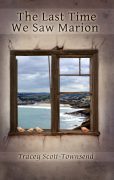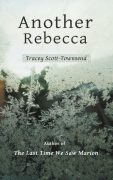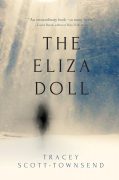Light after Dark
M y little boy spoke of wanting to die. His statements came out of the blue at innocuous moments – once when we were playing with Lego on the living room floor.
y little boy spoke of wanting to die. His statements came out of the blue at innocuous moments – once when we were playing with Lego on the living room floor.
Yet his reception class teacher described his smile as ‘lighting up the room’. Perhaps that light shone all the more brightly for its contrast with the darkness that lay behind it.
Later my child was diagnosed with Autism. He spent his young life as a square peg, fighting his enforcement into a round hole. At fourteen I allowed him to withdraw from this battle for good. He came out of school, disappeared into his room and planned his future. At sixteen he took off with a rucksack on his back and became a world traveller. He found the path he needed to walk on – quite often barefoot – and he still walks it now, currently with a like-minded partner.
When my four children were small I became a single parent. We moved into a white cottage overlooking fields. The massive garden was overgrown with neglected vegetables and inside, wallpaper peeled off the walls. I tackled the chaos of it one room at a time, perceiving the gem that lay beneath this tattered wrapping. My toddler daughter asked me who the man standing in the hallway was. I checked and could see no man but I gave an answer she accepted, “Perhaps he’s happy to see children in the house.” I learned that an old man had taken his own life in what was now our home. One or two odd incidents occurred after that but I always felt what I’d told my daughter was true. We had brought life back into the house. My family of young children was the light after his darkness.
 In my novels I draw heavily from my own emotional experiences. I break myself into pieces and scatter the crumbs amongst the various characters. I wrote the first draft of The Last Time We Saw Marion (Inspired Quill 2014) five years after I lost my first baby. I set the book in the estuary landscape where I’d lived at the time. By the time I began the first rewrite more than 20 years later I was able to use my real-life experiences to put flesh on the bones of that novel. My second son had almost died as a baby and I wrote the details of this into Jane’s loss of her baby Caitlin. Like Cal and Sarah in the book, I’d also experienced the death of a sister by then. My sister has never ‘come back’ like theirs but she does manage to nudge her way into my novels in disguise.
In my novels I draw heavily from my own emotional experiences. I break myself into pieces and scatter the crumbs amongst the various characters. I wrote the first draft of The Last Time We Saw Marion (Inspired Quill 2014) five years after I lost my first baby. I set the book in the estuary landscape where I’d lived at the time. By the time I began the first rewrite more than 20 years later I was able to use my real-life experiences to put flesh on the bones of that novel. My second son had almost died as a baby and I wrote the details of this into Jane’s loss of her baby Caitlin. Like Cal and Sarah in the book, I’d also experienced the death of a sister by then. My sister has never ‘come back’ like theirs but she does manage to nudge her way into my novels in disguise.
 Of His Bones (Inspired Quill 2017) is set 20 years after The Last Time We Saw Marion. Mariana is happily adopted but when her own son is born she’s drawn to connect with the two strands of her birth family. The sea is again the beating pulse of the story. The sense of place as always, an extra character.
Of His Bones (Inspired Quill 2017) is set 20 years after The Last Time We Saw Marion. Mariana is happily adopted but when her own son is born she’s drawn to connect with the two strands of her birth family. The sea is again the beating pulse of the story. The sense of place as always, an extra character.
 My second novel, Another Rebecca (Inspired Quill 2015) is about a teenage girl who lives with her alcoholic mother. Another story brought to life from 1989, when I wrote it late at night in blue biro on the pages of an exercise book. Rewriting it into a novel two decades later I placed the 17 year-old Rebecca and her mother in a caravan on a scrubby piece of land in Lincolnshire where my family had temporarily lived when I was the same age. An unhappy time for my mother due to my father’s alcoholism. In the book Rebecca has to cope with her mother’s addiction.
My second novel, Another Rebecca (Inspired Quill 2015) is about a teenage girl who lives with her alcoholic mother. Another story brought to life from 1989, when I wrote it late at night in blue biro on the pages of an exercise book. Rewriting it into a novel two decades later I placed the 17 year-old Rebecca and her mother in a caravan on a scrubby piece of land in Lincolnshire where my family had temporarily lived when I was the same age. An unhappy time for my mother due to my father’s alcoholism. In the book Rebecca has to cope with her mother’s addiction.
 I set The Eliza Doll (Wild Pressed Books 2016) partly again on the Humber Estuary – a place that has always stayed with me. Ellie is unable to bond with her third child Eliza and this ricochets into the future – where we find Ellie on a poignant trip to Iceland with her ex-husband, Jonah. I’m lucky enough to have fallen in love with all my children at birth but I do use elements of my third son’s struggles in the character of Eliza. He recognised these when he read the manuscript.
I set The Eliza Doll (Wild Pressed Books 2016) partly again on the Humber Estuary – a place that has always stayed with me. Ellie is unable to bond with her third child Eliza and this ricochets into the future – where we find Ellie on a poignant trip to Iceland with her ex-husband, Jonah. I’m lucky enough to have fallen in love with all my children at birth but I do use elements of my third son’s struggles in the character of Eliza. He recognised these when he read the manuscript.
Family relationships wind their way into the heart of my writing – there’s so much darkness and light to explore in every family – in every life.
For me, fiction is a way of making a concrete ‘thing’ of thought processes that might otherwise be too difficult to deal with.
My next three novels reach further out from the family into the vast sea of wider human experience. I try and tackle the chaos of what can seem an uncaring human race. The Foam of the Sea (currently in preparation for submission) explores the plight of refugees, amongst other things. The Vagabond Mother takes a middle-aged woman – inspired, as I’ve been by mine – by her son – out of her comfort zone into a much simpler way of life. Treading lightly on the earth. The novel I’ve recently started writing deals with how we carry responsibilities through the years from having children to when we must consider the welfare of our elderly parents. At the same time looking outwards at a troubled political situation. And minding it. I try to voice my hopes and fears.
I look to my children as beacons in the fog of current political uncertainty. My children and all the young people. I have a feeling the tide is turning. Their consciousness has grown greater than ours. They’re braver in some ways than my generation and so many of them – those with curiosity and a sense of adventure at least – have seen so much more of the world than we did.
—
Tracey Scott-Townsend is the author of uncompromising novels which delve into often uncomfortable aspects of relationships. Motherhood is frequently at their heart and a strong sense of place is also important.
Tracey writes in a shed in her garden. She and her husband frequently take to the road with their dogs in a converted campervan. Their motto is ‘Wherever I find a layby, that’s my home’.
Tracey is the mother of four grown children. The Last Time We Saw Marion, Another Rebecca and Of His Bones (Inspired Quill) and The Eliza Doll (Wild Pressed Books) are her published novels to date.
Find out more about her on her website https://traceyscotttownsend.com/
Category: Contemporary Women Writers, On Writing
























